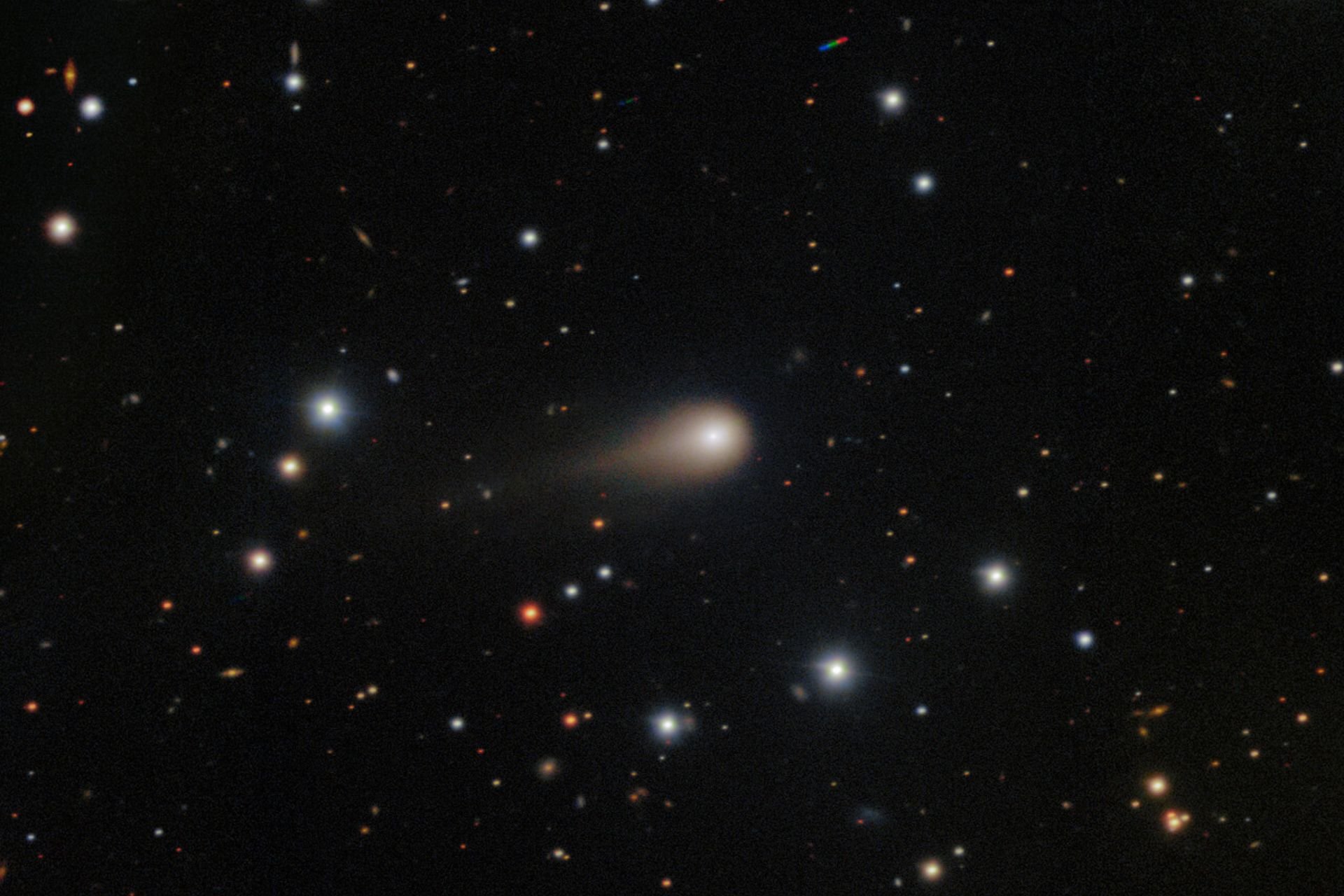
Astronomers are fascinated by a remote galaxy surrounded by two enormous, intersecting rings of radio light in the cosmos, each roughly 300,000 light-years wide. This finding, made by volunteers in the RAD@home Astronomy Collaboratory citizen-science initiative in Mumbai, is termed an “Odd Radio Circle.” The rings are situated within a larger radio cloud that extends nearly 3 million light-years. These circles, occasionally referred to as ORCs, were identified only six years ago, and their origin remains unclear. They may be shockwaves resulting from the merging of black holes or galaxies. Most are 10 to 20 times larger than the Milky Way, but only a small number are known to date.
The newly identified ORC, designated RAD J131346.9+500320, is the furthest and most powerful ever discovered. Its distance is such that astronomers observe it as it existed when the universe was merely half its present age of 13.8 billion years, attributable to the time light requires to reach Earth. What makes it even more astonishing is that it comprises two overlapping circles—a double-ring phenomenon seen only once before.
“ORCs are among the most peculiar and stunning cosmic structures we’ve encountered,” remarked Ananda Hota, the program’s founder, in a statement, “and they may provide essential insights into how galaxies and black holes evolve in tandem.”
This marks the initial ORC found through citizen-assisted science and the first recognized using LOFAR, a network of antennas across the Netherlands and other European nations. ORCs can exclusively be detected by radio telescopes. The discovery was made by volunteers using their own observations to comb through deep space maps for unusual patterns that may have eluded computer analysis. The results were published in the Monthly Notices of the Royal Astronomical Society.
The authors propose that these rings could be generated by strong winds emanating from specific galaxies, which push material into the far reaches of space and mold it into these formations. An animation created by the program illustrates the rare double-ring ORC expanding following a cataclysmic event in the central galaxy.
Alongside the double ring, the program uncovered two additional instances. In RAD J122622.6+640622, astronomers noted a galaxy nearly 3 million light-years wide. One of the jets from its core exhibited a sudden bend, forming a ring of radio light about 100,000 light-years broad. In the third example, RAD J142004.0+621715, the galaxy spanned 1.4 million light-years and displayed a similar ring at the end of one of its jets, with another slender jet observed on the opposite side of the host galaxy.
Scientists assert that these unusual cosmic entities illustrate how galaxies can influence their environments in more diverse ways than anticipated. “ORCs and radio rings are not merely isolated anomalies,” stated Pratik Dabhade, a coauthor from the National Centre for Nuclear Research in Poland, in a statement. “They belong to a larger family of exotic plasma structures shaped by black hole jets, winds, and their surroundings.”